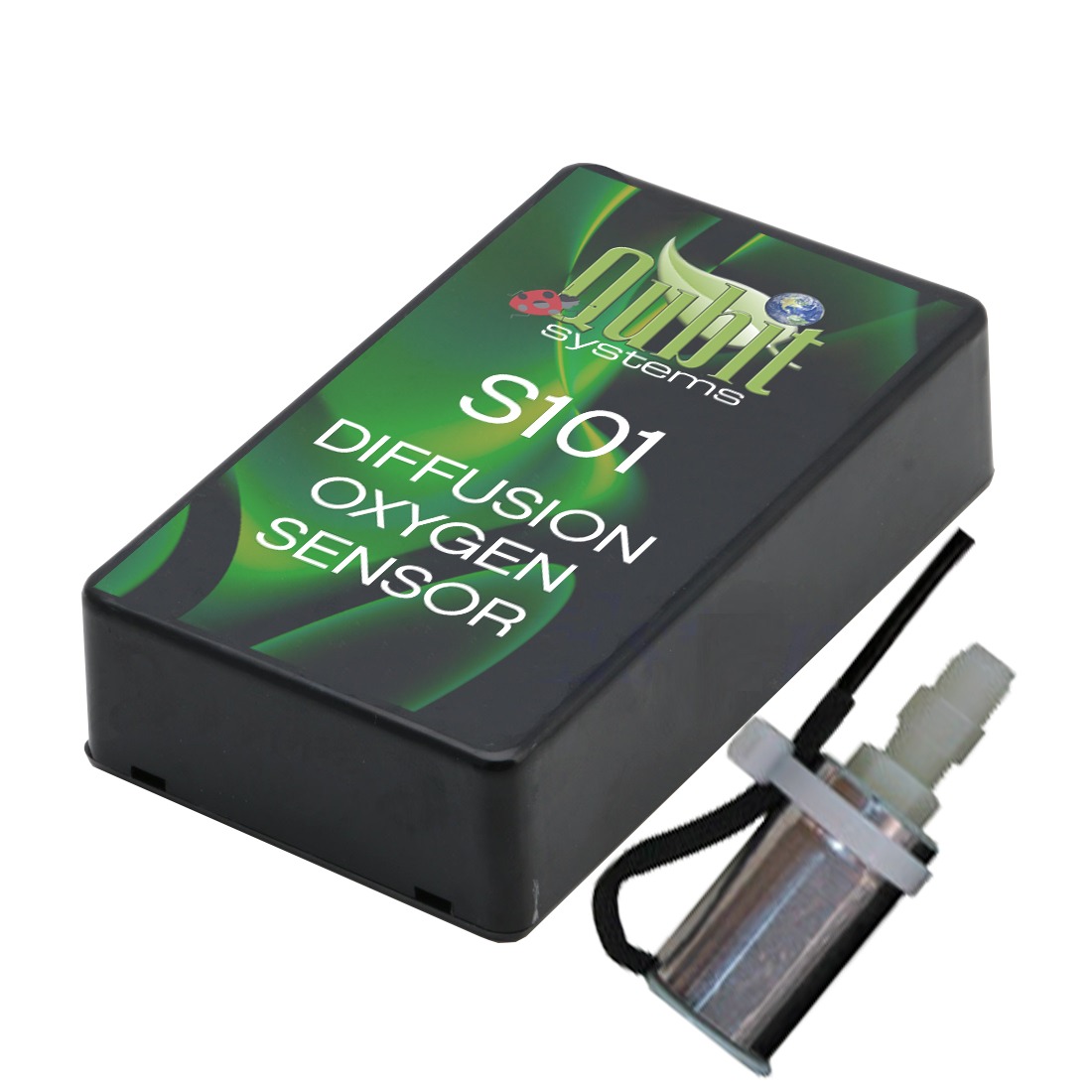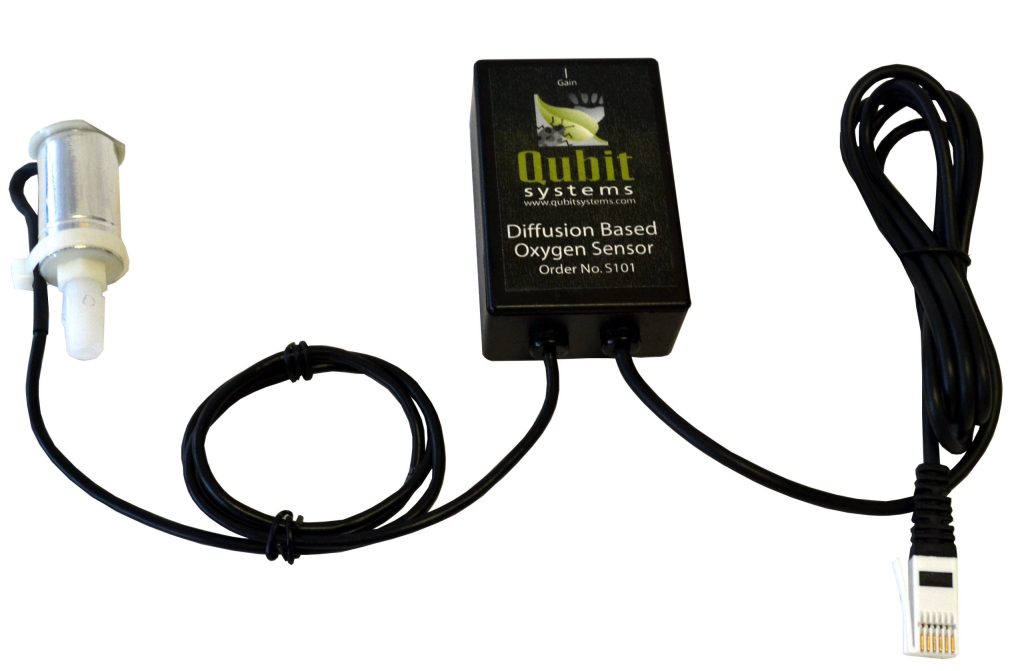
The S101 Diffusion Oxygen Sensor measures oxygen concentration from 0-100% in a sealed chamber. Oxygen diffuses to the sensor from the surrounding atmosphere.
S101 Diffusion Oxygen Sensor is a galvanic cell (a lead-oxygen battery) consisting of a lead anode, an O2 cathode, and an acid electrolyte. It also incorporates an O2-permeable Teflon FEP membrane with a gold electrode bonded to its surface. Oxygen diffusing through this membrane is reduced electrochemically at the gold electrode. The sensor can be fitted inside a sealed chamber for detection of O2 gas diffusing across the membrane.
A resistor and a thermistor (for temperature compensation) are connected between the anode and the cathode so that the battery is always discharged. The output of the instrument is proportional to the current flowing through the resistor and thermistor and to the partial pressure of O2 in contact with the Teflon FEP membrane. The signal from the oxygen sensor is transmitted to the computer via the data acquisition interface and displayed in software as % O2.
- Simple one point calibration requiring only atmospheric air
- Output linear
- 90% response in 12 seconds
- Adjustable gain
- Output range adjustable from 0 – 25% = 5 V
- Temperature compensation
- Expected sensor life is 3 to 5 years. Replacements are inexpensive.
- Sensor is fitted with 1/8 inch Nylon NPT Union
Oxygen Sensor.
- Measurements of photosynthesis in a sealed leaf chamber
- Monitoring of O2 levels in a closed chamber
| Principle | Acid Electrolyte, Teflon Diffusion Membrane |
| Detection Range | 0-25 %O2 (Linear) standard (can extend to 0-100%) |
| Resolution | ±50 ppm |
| Accuracy | ± 0.21% of Full Scale |
| Response Time (90%) | 12 Seconds |
| Life Expectancy | 4-5 years |
| Influence by Other Gases | Ammonia and Ozone |
| Required Sample Volume | Minimum of 2-3 mL/min |
| Operating Temperature | 5 to 40oC (Effective range) |
| Compensation | Built-in Temperature Compensation |
| Pressure Range | 0.5 atm to 1.5 atm |
| Pressure Effect | Output voltage changes proportionally |
| Shock Resistant | to 2.7 G |
| Vibration | Avoid strong vibration |
| Weight | 125 gm |
| Output | 0-5 volt output |
| Power Supply | 5 Volts (Provided by computer interface) |
- Maud Demarty, Julie Bastien, Alain Tremblay, Raymond H. Hesslein and Robert Gill. Greenhouse Gas Emissions from Boreal Reservoirs in Manitoba and Quebec, Canada, Measured with Automated Systems. Environ. Sci. Technol. Vol 43, Number 23, p8908–8915 (2009).
- Joseph Strzalka, Jing Liu, Andrey Tronin, Inna Y. Churbanova, Jonas S. Johansson and J. Kent Blasie. Mechanism of Interaction between the General Anesthetic Halothane and a Model Ion Channel Protein, I: Structural Investigations via X-Ray Reflectivity from Langmuir Monolayers. Biophysical Journal Vol 96, Issue 10, p4164-4175 (2009).
- Stephen Hunt. Measurements of photosynthesis and respiration in plants. Physiologia Plantarum Vol 117, Issue 3, p314–325 (2003).


